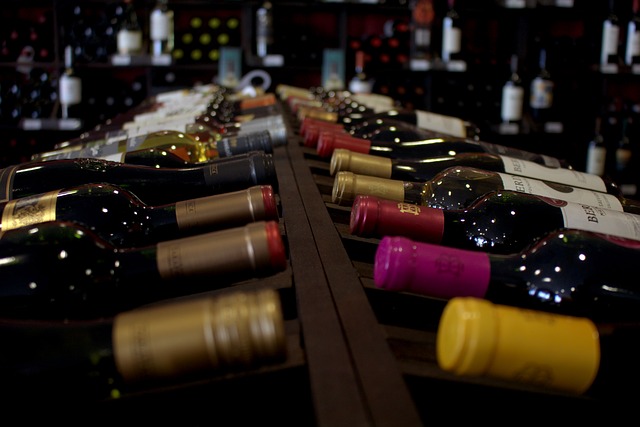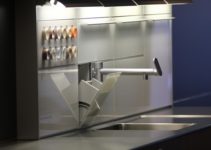
Best wine fridge consumer reports in 2022
If you’re like most wine enthusiasts, you probably have a few bottles of your favorite varietal tucked away in a dark corner of your pantry. But for the true connoisseur, that just isn’t enough. You need to store your wine at the perfect temperature to keep it from going bad and dulling its flavor. That’s where a wine fridge comes in handy.
But with all the different options on the market, how do you know which one is right for you? Here we’ll take a look at some of the best wine fridge consumer reports latest ratings. So whether you’re looking for a small-capacity unit or something that can hold an entire case of vino, we’ve got you covered. Read on to find out which one is right for your home bar or kitchen.
Table of Contents
About The Wine Fridge
The wine fridge is a special refrigerator designed specifically for storage of your wines. It has all the functions you would expect from a normal refrigerator, but it also has one more function – cooling down wines to optimum storage temperature quickly. This function allows you to save money on electricity, because it takes less time for your bottles to reach perfect condition when stored in the wine fridge than if they were stored in a standard fridge.
How does it work?
The principal behind the operation of the wine fridge is similar to other modern refrigerators with separate compartments that are based on thermocompression principle or thermodynamic absorption principle. The key difference lies in that the compressor of the fridge does not work on the same principle as other refrigerators, but works on thermocompression principle. This means that there is no compression of gas (Freon) like in traditional air-conditioners.
There are 2 main technologies to cool down wines at home – thermocompresssion and absorption; the key difference between them is that while cooling process based on compressor can be started immediately, based on absorption takes hours to start working. The refrigerator with wine storage compartment using thermocompression technology provide for immediate cooling of the bottles placed in the container by compressing gases which results in lowering of their temperature rapidly.
The wine fridge uses a combination of these two principles, so the mechanisms inside are the same: in the fridge body in which wines are placed, gas is compressed and because of cold temperature it becomes heavy. The heavy cold air flows down through the compartment and goes between bottles so they get colder much faster than in a normal refrigerator or wine cooler.
What Should You Look For When Buying A Wine Fridge?
The choice of wine fridge depends on such factors as location, capacity, design and purpose. If you already have one that fits your needs, there’s no need to change it. However if you’re planning to purchase one, then check out these features below before finalizing your decision:
Notes: Wine fridges with glass doors are not recommended for homes with small children. Also note that even modern refrigerators can be noisy when working.
Wine Fridge Types:
Wine fridges come in a range of sizes from small enough to sit on your work surface to large enough for full sized wines and champagne bottles. There are 2 main types – freestanding or built-in; they vary primarily by their location within the home, whether they are free standing or integrated into kitchen cabinetry. Built-in wine fridge designs offer more flexibility because they can be easily fitted into an existing space with basic installation skills. The freestanding models, however, occupy only one place and do not take up additional space which is important if you live in a small apartment or condo where every inch counts. Newer designed models can be either freestanding or built-in, so you don’t have to limit yourself with the size of your wine fridge.
Construction:
High quality materials are essential for making best wine fridge consumer reports – stainless steel is the most common material used in construction of cabinets and exterior surfaces; it’s strong, corrosion resistant and looks great when paired with handle made from heavy duty plastic. Inside walls should also be constructed using durable materials like stainless steel or aluminum. Newer models offer additional insulation to help keep temperature constant. If the outer body is not well insulated, then there is no point in having efficient cooling system inside because heat will seep out rather than cool down your wines properly leading to an increased electricity bill. At Wine Cellar Pro we recommend purchasing wine fridge with quality insulation to keep temperature constant and minimize energy waste.
Design:
There are six main types of the best wine fridge consumer reports available on the market today, each oriented towards a different group of consumers. Whether you’re looking for a space-saving model or one that can hold larger volumes of your favorite beverage, knowing which style is right for you will narrow down your choice considerably. The first type called “console” is designed primarily for those who love to store wines at home but don’t have much space; it’s made exclusively to fit in tight corners and has smaller capacity than other models. The second type – “compact” – is perfect for those who like having wines accessible rather than stored in a cellar, so the tiny cabinet fits perfectly in a dining space or kitchen counter. The “built-in” wine fridge is perfect for those with limited floor space because it can be installed into your cabinets and fitted flush against adjoining walls. If you have a large collection of wines then you will need a larger capacity model that gives you more room for storage. If you’re looking to build your own customized wine cellar then look for roll-in model which allows you to move racks along tracks mounted on the ceiling; this way you can configure storage spaces any way that suits your needs.
Features:
There are other less obvious but nonetheless beneficial features included in some models which make them stand apart from their competitors – lockable doors offer greater security for your wines and allow you to store them in places where children or pets can get to them. Some models also have temperature-controlled compartments which are great for serving champagne at the optimal temperature.
Wine fridges come in a range of prices from inexpensive compact units to highly sophisticated wine cabinets which can cost thousands of dollars. New technology and design breakthroughs mean that all types and features available in premium models were once only available in custom built cellars; but now they’re accessible to everyone, making it easier than ever before to build your own personal cellar right at home!
Tips To Use A Wine Fridge
A wine fridge can be used to store your wines. Many wine connoisseurs prefer storing their wines in a wine fridge because it preserves the quality of the wines by regulating temperature control. The main purpose of having a wine fridge is to maintain proper humidity and temperature, most especially red wines that are served at room temperature (65-68 degree Fahrenheit). A wide range of temperature helps with extraction and concentration of flavor in certain types of red wines which actually affects the taste.
A good way on how to use a wine fridge is to make sure that you read carefully the instructions included with your unit when it was delivered. There are various types of units for different spaces, so always refer first to the specifications indicated on what type would fit for your home.
Units with larger storage capacity are usually installed in a basement or large room while smaller units are for wine lovers who have limited storage spaces. If you have the luxury of space, choose an adjustable temperature unit so that you can set it on your preferred temperature settings depending on what type of wines you wish to store. This would be the best choice over fixed temperature units because they are more accurate when regulating temperatures since there is no need to worry about readjusting it frequently to avoid being too cold or too hot for the wines stored inside it. A single zone unit, which is ideal if you just want to chill whites and serve reds at room temperature only, is also available in the market today.
Wine fridges come in many different sizes and can be found in any appliance store. They are made of stainless steel with black interiors to help control the temperature of the room. It does not have any sounds when running so you can set it in your living space without worrying about creating noise disturbances in your home.
Consider how much wines you wish to store before purchasing a unit. Before buying, always check first what kind of wine fridges are available in your location so that you have an idea how much storage capacity is needed for your room or cabinet where you would place it. There are units available on the market today that are specially designed for storing wines at home, while some are just regular units which are used for other purposes but happen to be perfectly fine for storing your wines.
When buying one, always check the tolerance of each compartment. The best wine fridge consumer reports are ones with push-pull drawers on ball bearings that glide smoothly within its enclosure. It should have an exterior finish that does not easily wear off or corrode when exposed to high humidity or harsh conditions. If you are purchasing a single zone unit for chilling whites and serving reds at room temperature only, make sure also that it has separate controls for maintaining different temperatures in the storage compartments. A good choice over these units would be dual-zone units where you can set both at cool temperatures while some parts serve as warming chambers to keep your red wines close to their ideal drinking temperatures between 55 to 65 degrees Fahrenheit depending on the type of wine you are serving.
The right temperature also depends on the type of wines you wish to store in your unit. The best storage temperature for white wines would be around 46-54 degrees Fahrenheit, while reds should be stored in chambers set within 50-66 degrees Fahrenheit. Pinot Noir requires 55-60 degree Fahrenheit temperatures while Cabernet Sauvignon can adjust to room temperatures between 58 to 62 degrees Fahrenheit. When storing Champagne, it is recommended that you place them in an unopened bottle inside a regular fridge at 39 degrees Fahrenheit then transfer it later into the wine fridge when needed before serving or drinking it so that you can chill its bubbly champagne taste for better enjoyment. More than just properly maintaining the quality of wines, a best wine fridge consumer reports also serves as a beautiful and attractive way to display your wines. If you entertain often, it can be an elegant centerpiece in any dining area or living room. It is best that you consider what design and appearance would fit your home the most so that the purpose of using the unit will match with its overall style and look.
If you happen to be a serious wine lover who knows almost everything about them such as how long they should be aged for perfect flavors, which type goes well with different foods, and other interesting facts such as where each type originated from and how it was made, why not invest on one of these units today to better protect your precious wines? The right storage unit can ensure that all your wines stay perfectly intact and ready to serve at their best condition and taste.
What Makes A Good Wine Fridge
There are several key features that separate high-end units from the rest of the pack when it comes to optimizing your storage environment. These include:
– Interior lighting
Good illumination allows you to easily see your collection and its labels in dimly lit spaces.
– Temperature fluctuations
Look for an appliance that has digital controls and low voltage fans that produce barely perceptible changes in air flow and minimize temperature swings.
– Humidity control
This is especially important for cork-finished wines, since fluctuations in humidity can result in “cork-taint” or overly dried corks.
– Thermoelectric cooling
Don’t believe all the hype you read about compressor-based wine fridges; they’re actually not much better at preserving reds than your standard kitchen refrigerator. (For more on this topic, check out our article on The Truth About Wine Fridge Compressors ).
– Capacity
Check the specs before buying to make sure it’s large enough to accommodate your entire collection.
– Ease of use
Look for an appliance with electronic controls and soft-touch buttons that are intuitive and easy to navigate, especially if you don’t plan on taking advantage of the built-in light or humidity controls.
FAQs About Best Wine Fridge Consumer Reports
How Much Do Wine Fridge Cost?
There’s good news and bad news on this front… One of the biggest benefits is their low price tag; a fully-stocked unit can be had for as little as a few hundred bucks. But the bad news is that these budget models often make serious tradeoffs in terms of performance and reliability.
What’s The Difference Between A Wine Fridge And An Ordinary Refrigerator?
The main thing you’re looking at is temperature, which should remain constant throughout the entire cabinet. Some refrigerators fluctuate by as much as 20 or 30 degrees, which might not sound like it’d affect your vino all that much but can actually damage its flavor and aroma.
How Many Bottles Can They Hold?
That depends on the unit and how you arrange its shelves—as well as whether you’ve got enough room to accommodate them! Make sure you have at least four inches of clearance between the top shelf and the ceiling to give your bottles plenty of breathing room.
Are They Meant For Storing Just Reds Or Can I Keep My Whites Too?
For the best possible results, it’s recommended that you store wines in their original cases side-by-side with their labels facing outwards. That way, you can easily decipher each one when it comes time to uncork.
How Do I Decide Which Unit Is Right For Me?
Before anything else, take a good hard look at what other people are saying about it on Amazon.com or elsewhere online. Those reviews will often let you know if users encountered any recurring problems and whether or not they’re happy with their purchase. As for the other features you’ll want to look at, check out our handy buying guide below.
Is It Worth Buying An Extended Warranty?
Unless you’re planning on using the fridge as a “party machine” and opening your wine every night, chances are slim that it will break down within the first few years of use. Most units come with at least five-year warranties, but they only cover repairs—not replacements. If you’re really paranoid about defects or simply want to be sure you don’t end up with a lemon during the coverage period, check out some of the top-rated plans through SquareTrade before making your final decision.
>>> See more: Proper Wine Temperature and How to Select a Wine Fridge | Best wine fridge consumer reports
Conclusion paragraph: If you are in the market for a wine fridge, be sure to check out the best wine fridge consumer reports. The information in these reports can help you make an informed decision about which wine fridge is right for your needs. Keep in mind that not all wine fridges are created equal – some have more features than others, and some are better suited for particular types of wines. By considering the different factors involved in choosing a wine fridge, you can be sure to find the perfect one for your home. Have you found the best wine fridge for your needs? Let us know in the comments!
Read more:



